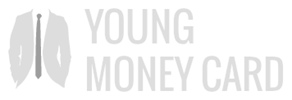Understanding a Personal Line of Credit
A personal line of credit embodies a highly flexible financing option that offers individuals the ability to manage their financial needs with increased control. Differing from traditional loans characterized by a lump sum disbursement, a personal line of credit provides the chance to access funds on an as-needed basis within a predetermined credit limit. This flexibility empowers borrowers to tailor their financial solutions according to their specific needs, without the burden of managing a large sum upfront.
How Does a Personal Line of Credit Work?
Gaining access to a personal line of credit begins with lender approval, which is contingent upon evaluating an individual’s creditworthiness. Once the lender determines you are eligible, they establish a credit limit that reflects your financial profile and capacity to repay. This limit defines the total amount you can borrow, providing you the freedom to draw funds gradually, according to your requirements. One of the distinct advantages of a personal line of credit is the interest obligation, which applies solely to the amount borrowed rather than the entire credit limit. This feature allows for cost savings and efficient financial planning, as you are not penalized for funds that remain unused.
Key Features and Benefits
A personal line of credit offers several features that enhance its appeal compared to other credit products:
1. Revolving Credit: At its core, a personal line of credit operates on a revolving credit basis, akin to a credit card. This means that once you repay the borrowed sum, that portion of your credit limit is restored, ready for future use. This continuous cycle of borrowing and repayment provides dynamic financial flexibility, which can be particularly advantageous for ongoing projects or recurring expenses.
2. Flexibility: The versatility afforded by a personal line of credit is one of its paramount benefits. Funds accessed can be utilized for a myriad of purposes, ranging from consolidating existing debts, financing home renovations, or addressing unforeseen financial burdens. The ability to allocate borrowed funds across different needs underscores the utility of this credit option.
3. Interest Rates: Interest rates associated with personal lines of credit are generally variable. This variability implies that rates can fluctuate based on market conditions, potentially affecting the cost of borrowing over time. Nevertheless, these rates are often lower than those of credit cards, making a personal line of credit a potentially cost-effective option for unsecured borrowing.
Repayment Structure
The repayment terms affiliated with personal lines of credit can differ across lenders and agreements. Typically, borrowers might be expected to make minimum monthly payments, which are structured as a percentage of the outstanding balance plus any accrued interest. This structure offers flexibility compared to fixed monthly payments, granting you the opportunity to manage financial obligations according to your cash flow and budgetary considerations. However, it demands a disciplined approach to ensure that repayments do not escalate beyond control.
Qualifying for a Personal Line of Credit
Securing a personal line of credit necessitates meeting specific prerequisites, which emphasize financial stability and responsibility:
Credit Score: The approval process heavily relies on the applicant’s credit score. Lenders scrutinize your credit history to ascertain your reliability and capacity to honor financial commitments. A high credit score not only bolsters your chances of approval but could also unlock favorable terms, such as lower interest rates and higher credit limits, enhancing the overall affordability of the credit line.
Income: Demonstrating a stable and sufficient income reassures lenders of your ability to repay borrowed funds. Your income level helps define the credit limit and terms the lender is willing to offer. As such, showcasing consistent earning potential sets a solid foundation for obtaining a line of credit.
Is a Personal Line of Credit Right for You?
Determining the suitability of a personal line of credit involves a comprehensive assessment of your financial landscape. Critical factors include your current monetary needs, long-term financial goals, and your ability to responsibly manage revolving credit. If you have variable expenses or anticipate recurring financial demands, a personal line of credit could serve as a practical funding resource. Its adaptable nature enables you to address fluctuating financial requirements effectively, provided you maintain a disciplined approach to credit management.
In essence, a personal line of credit can emerge as a strategic financial tool when used judiciously. For those seeking to delve deeper into the intricacies of personal lines of credit or address specific concerns, it is advisable to directly contact financial institutions. Engaging with financial experts or exploring their online platforms can greatly aid in enhancing your understanding of available credit options, and tailor solutions that align with your personal financial objectives.

